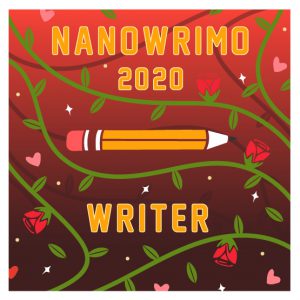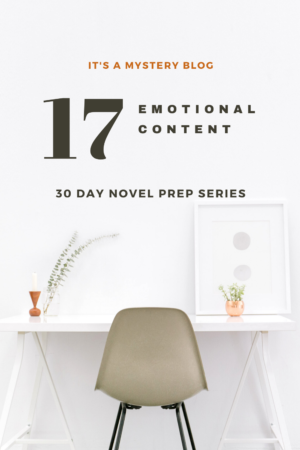If you have been following our NaNoWriMo (National Novel Writing Month) preparation series, it is time to consider your novel’s emotional content.

The emotional aspects of novels can be complex and confusing, but if done properly, can lead to a hugely successful novel.
Considerations When Writing Emotions and Feelings
1. Emotional Response of Readers
Authors want novels to evoke emotional responses in readers. That is the goal. What makes it tricky is each response will be unique to an individual reader at a given moment. What angers one reader will make another sad, for example, or what makes a reader laugh one day may make them cry the next. Moreover, writers may or may not be able to guide those emotions by what they put on the page.
2. Inner Journey of the Character
On the other hand, writers do control the inner or emotional journeys of their characters. What those journeys look like is tied to genre. A hardened spy in a thriller will exhibit very different emotions and feelings than the heroine of a romance or a young adult novel about death and dying.
3. Emotions versus Feelings
To make things even more complicated, some references use the words emotions and feelings interchangeably, whereas others suggest that there is a difference. The idea is that true emotions are basic and instinctual (hardwired), whereas feelings are more likely the result of some mental processing, possibly intermingled with thoughts.
Early researchers categorized the basic emotions as happiness, sadness, anger, surprise, fear and disgust. Recently psychologists have found 27: admiration, adoration, aesthetic appreciation, amusement, anger, anxiety, awe, awkwardness, boredom, calmness, confusion, craving, disgust, empathic pain, entrancement, excitement, fear, horror, interest, joy, nostalgia, relief, romance, sadness, satisfaction, sexual desire and surprise (Science News Article).
I’m no expert on all this, but I have assembled some resources that you might find helpful.
Resources
General: 7 Tips for Writing Emotion in Your Story
Creating Emotional Connections introduces how to make a emotional connection with readers by creating a empathy with the character, and grabbing the reader’s attention through conflict and tension. Her ideas are based on brain chemistry.
Writer’s Unboxed Blog has several articles:
The last three articles are by Donald Maass, who has a book on the subject:
The Emotional Craft of Fiction: How to Write the Story Beneath the Surface* by Donald Maass
The Emotion Thesaurus: A Writer’s Guide to Character Expression* (Second Edition) (Writers Helping Writers Series) 2nd ed. Edition by Becca Puglisi and Angela Ackerman (Note: they list 75 “emotions”)
TIME The Science of Emotions: Love. Laughter. Fear. Grief. Joy* Single Issue Magazine – October 27, 2017
Exercise:
Find a novel in your genre and highlight the passages relating to a) thoughts, and b) feelings and emotions (see Helping Writers Become Authors for more details).
In the upcoming days, while you are setting down the physical or external journey of your character through scenes and outlining, use what you’ve learned to track your character’s inner/emotional journey as well.
#####
Visit our 30 Day Novel Prep Page for all the links.








Leave a Reply